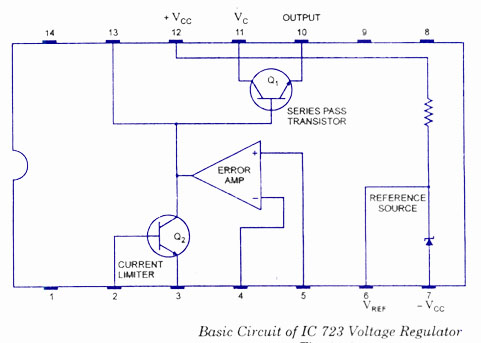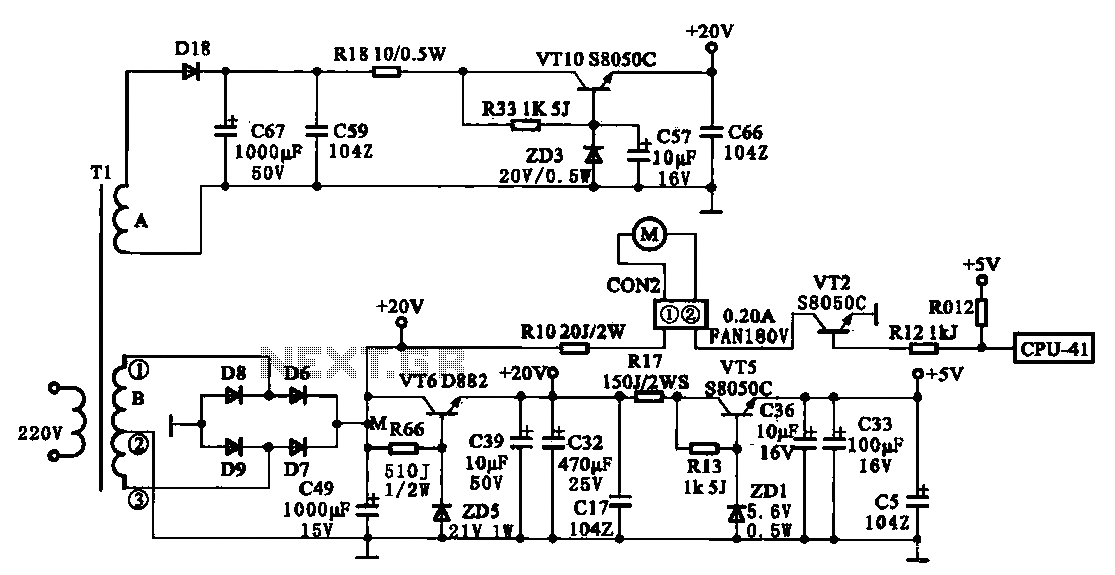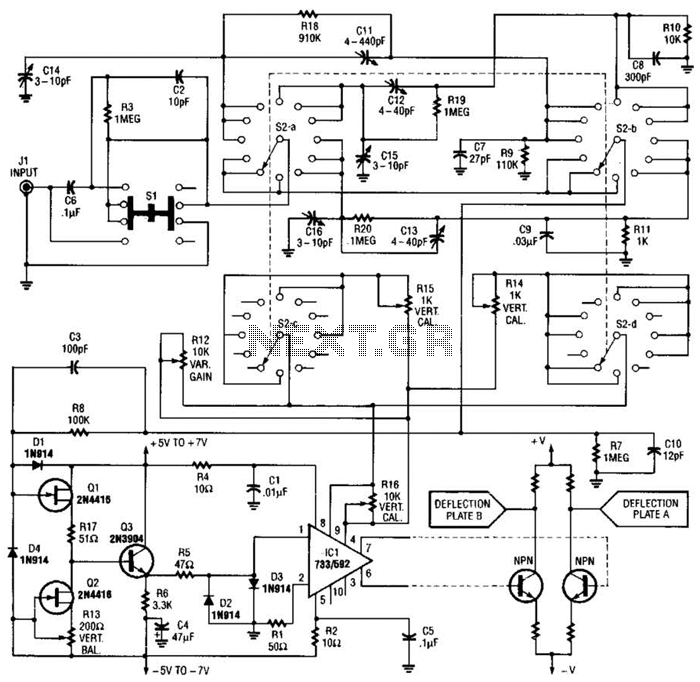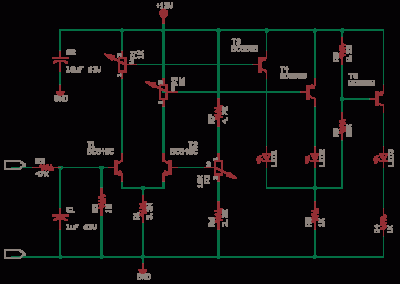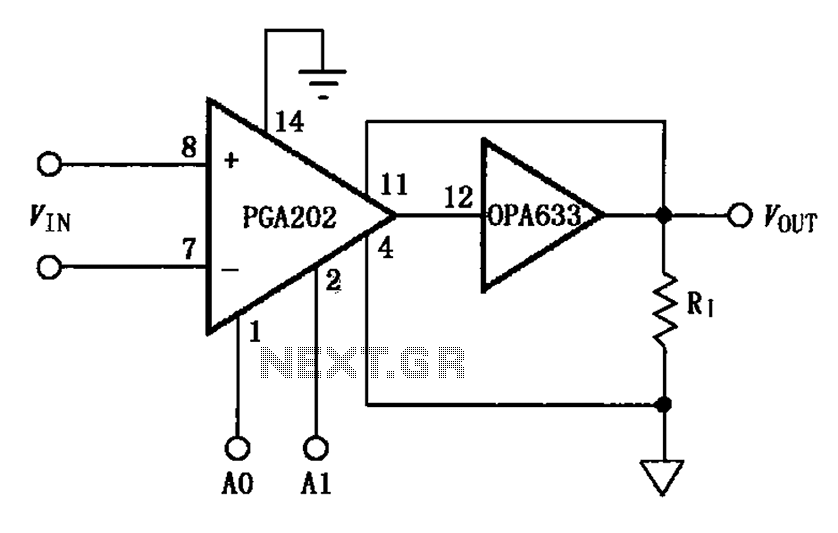
Joule Thief Circuit Diagram
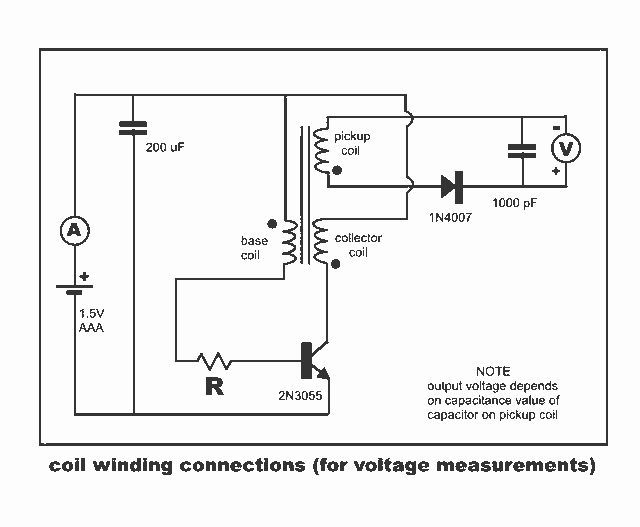
New Jewel Thief "Resonate LCR Circuit" with significantly reduced energy consumption. Measurements of voltage and current for the Joule thief.
The Jewel Thief circuit, particularly the "Resonate LCR Circuit," is an innovative low-power design that enhances energy efficiency while maintaining functionality. This circuit operates on the principle of energy harvesting, utilizing an inductor-capacitor-resistor (LCR) network to optimize the conversion of energy from a low-voltage source, such as a single-cell battery.
In this configuration, the circuit employs a transistor as a switch, which rapidly alternates between on and off states. This switching action allows the inductor to store energy during the "on" phase and release it during the "off" phase, effectively boosting the voltage output. The resonant characteristics of the LCR network are pivotal, as they enable the circuit to resonate at a specific frequency, maximizing energy transfer and minimizing energy loss.
Voltage and current measurements are critical in assessing the performance of the Joule Thief. These measurements can be taken across various components, including the load, inductor, and capacitor. By analyzing these parameters, one can determine the efficiency of the circuit and make necessary adjustments to optimize performance. The reduced energy draw signifies that the circuit can operate for extended periods, making it suitable for applications in low-power devices, such as LED lighting or small electronic gadgets.
This design showcases the potential of resonant circuits in enhancing energy efficiency, paving the way for further advancements in low-power electronics and sustainable energy solutions.New Jewel Thief "Resonate LCR Circuit" Much less energy draw. Joule thief voltage and current measurements. 🔗 External reference
The Jewel Thief circuit, particularly the "Resonate LCR Circuit," is an innovative low-power design that enhances energy efficiency while maintaining functionality. This circuit operates on the principle of energy harvesting, utilizing an inductor-capacitor-resistor (LCR) network to optimize the conversion of energy from a low-voltage source, such as a single-cell battery.
In this configuration, the circuit employs a transistor as a switch, which rapidly alternates between on and off states. This switching action allows the inductor to store energy during the "on" phase and release it during the "off" phase, effectively boosting the voltage output. The resonant characteristics of the LCR network are pivotal, as they enable the circuit to resonate at a specific frequency, maximizing energy transfer and minimizing energy loss.
Voltage and current measurements are critical in assessing the performance of the Joule Thief. These measurements can be taken across various components, including the load, inductor, and capacitor. By analyzing these parameters, one can determine the efficiency of the circuit and make necessary adjustments to optimize performance. The reduced energy draw signifies that the circuit can operate for extended periods, making it suitable for applications in low-power devices, such as LED lighting or small electronic gadgets.
This design showcases the potential of resonant circuits in enhancing energy efficiency, paving the way for further advancements in low-power electronics and sustainable energy solutions.New Jewel Thief "Resonate LCR Circuit" Much less energy draw. Joule thief voltage and current measurements. 🔗 External reference
